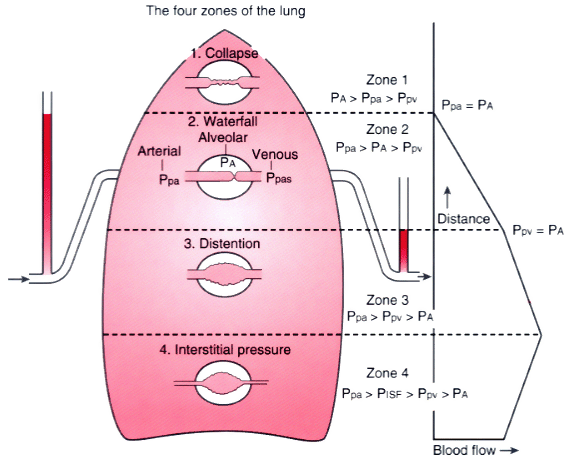 |
 |
Figure 17-1
Schematic diagram showing the distribution of blood flow
in the upright lung. In zone 1, alveolar pressure (PA)
exceeds pulmonary artery pressure (Ppa), and no flow occurs because the intra-alveolar
vessels are collapsed by the compressing alveolar pressure. In zone 2, Ppa exceeds
PA, but PA exceeds
pulmonary venous pressure (Ppv). Flow in zone 2 is determined by the Ppa-PA
difference (Ppa - PA) and has been likened to an
upstream river waterfall over a dam. Because Ppa increases down zone 2 whereas PA
remains constant, perfusion pressure increases, and flow steadily increases down
the zone. In zone 3, Ppv exceeds PA, and flow is
determined by the Ppa-Ppv difference (Ppa - Ppv), which is constant down this portion
of the lung. However, transmural pressure across the wall of the vessel increases
down this zone, so the caliber of the vessels increases (resistance decreases), and
therefore flow increases. Finally, in zone 4, pulmonary interstitial pressure becomes
positive and exceeds both Ppv and PA. Consequently,
flow in zone 4 is determined by the Ppa-interstitial pressure difference (Ppa - PISF).
(Redrawn with modification from West JB: Ventilation/Blood Flow and Gas
Exchange, 4th ed. Oxford, Blackwell Scientific, 1970.)

 |
